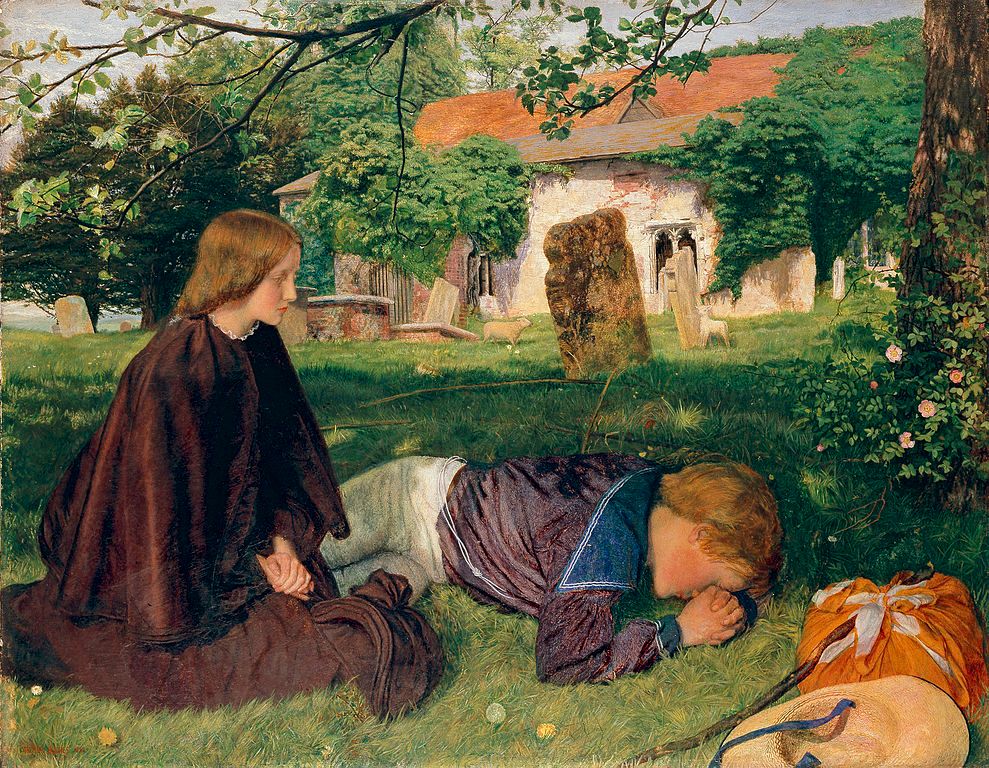Historic Painting: "Home from Sea" by Arthur Hughes, 1862.
This beautiful painting shows many of the characteristics I love about 19th century art.

This is a picture of sorrow, pathos and loss. It's also one of extraordinary beauty, richness and vivid detail. It's called Home from Sea, although the artist, Arthur Hughes, based it on an earlier work he did in 1857 called The Mother's Grave. In this version, painted in 1862, a boy, evidently just back from a tour with the navy, mourns over the grave of his mother who has apparently died while he was at sea. His sister sits nearby, unable to console him. While the expressions are soft and not very anguished, the overall effect of the picture is quite wrenching. Notice also the detail of the lamb behind the tombstone in the background. It's symbolic: a child separated from its parent (the sheep to the left) by the grave.
The landscape is one of those old churchyards that are so evocative of the English countryside. It is believed that the place depicted here is Chingford, Essex. Arthur Hughes began working on this scene in the 1850s, but for this version he asked his wife, Tryphena, to pose as the sister, who wasn't included in the original version. Hughes was the exemplar of the lush romantic painter of the late 19th century. In addition to scenes like this he was attracted to mythological/Arthurian themes and Shakespeare; he painted Ophelia from Hamlet several times. He was only 30 when he did this painting.


